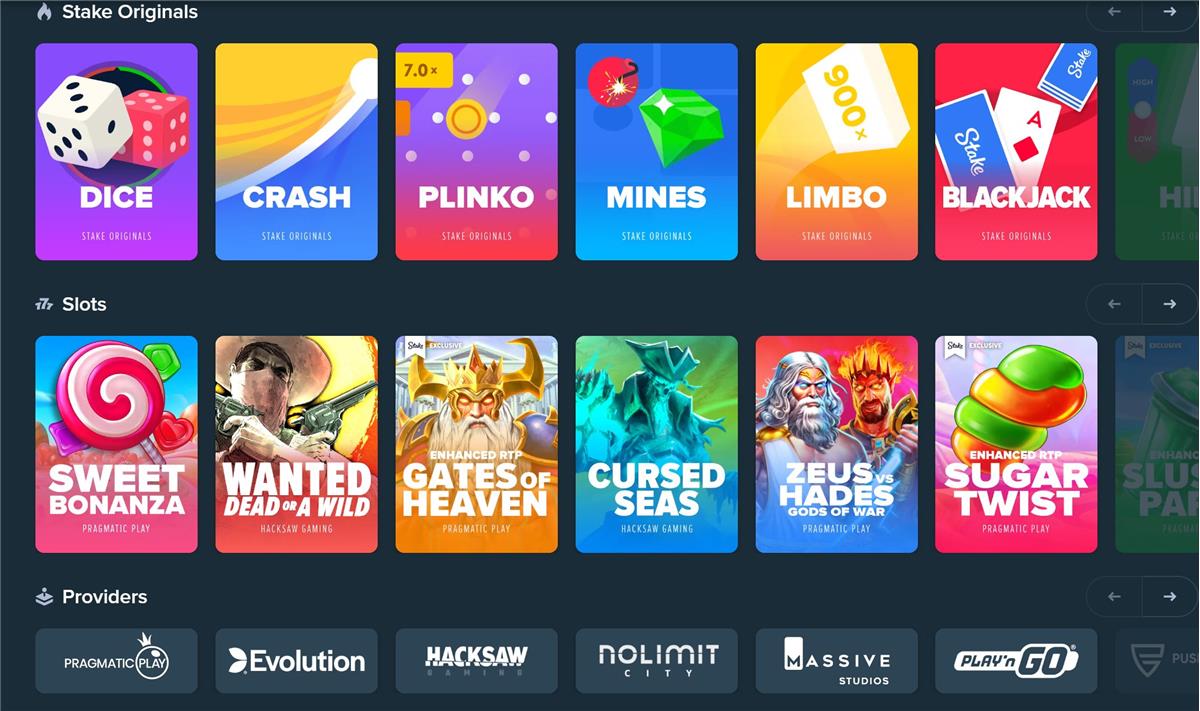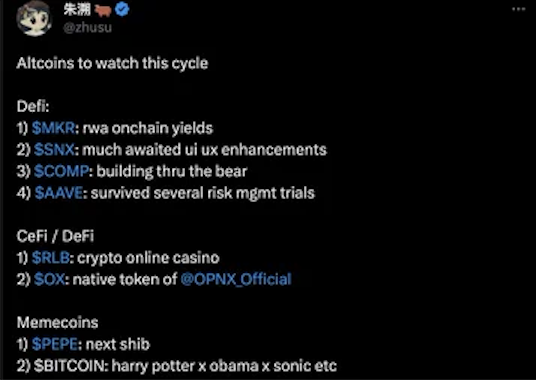Author: Crypto Weiduo, AC Capital
Utilize the gambling model. Is GGR suitable for your project? What is your profit model? How to control the kill?
“Crypto games must be playable.” Crypto game teams that still consider this as the only creed will inevitably die because they fail to recognize the game nature of crypto users or, in other words, do not understand “gambling.” Before starting a new crypto game project or planning to invest in a project, please learn Crypto Game 101 – the GGR (Gross Gaming Revenue) model of the gambling industry.
GGR, short for Gross Gaming Revenue, is the most common performance indicator in the gambling industry. It refers to the total amount of money players gamble and lose during a certain period, which is the gross profit of the casino, calculated as the total amount wagered minus the total amount won by players.
- A Quick Look at Recent Popular DeFi Narratives and Innovative Projects
- Admitting fault, American exchange Bittrex settles with SEC for a $24 million fine.
- LianGuai Morning News | Top 15 Stock ETFs of the Year are all related to cryptocurrencies
There is also another algorithm called NGR – Net Gaming Revenue, calculated as the total amount wagered minus the total amount won by players minus the total amount of bonus chips given through additional activities minus the total amount of gambling tax allocated.

Does it sound simple?
Let me tell you, GGR has another algorithm: Total amount wagered X Kill Rate. The so-called Kill Rate refers to the percentage of the total amount wagered that will be lost.
It is well known that gambling, even without cheating by the house, is not a fair game. Even in relatively fair games such as blackjack, baccarat, or dice throwing, there is still a house edge ranging from 0.5% to 20%.
Setting aside the “unlimited funds bug,” the house hopes that players:
– Keep gambling
– Bet big (to generate more revenue) Therefore, the casino will control the actual House Edge, especially in online gambling where there is more room for manipulation.
The result is that if the Kill Rate is too small, you won’t make money, and if it’s too large, no one will play. You cannot let customers consistently lose, nor can you let them consistently win, and you need to provide customers with certainty in terms of odds, which customers must also agree on.

Speaking of which, we can apply this to Crypto Games and even the crypto trading market. Let’s start with this interesting quote from @Mulan0x:

I agree with her statement, but here the casino should refer to a broad sense of a gaming place rather than strictly gambling.
The biggest difference between gambling and the game between crypto is whether players can accept variable odds.
In gambling games, regardless of the final Kill Rate, there is a framework for odds, while in Uniswap, each Shiba Inu token has different odds, and even each altcoin on @binance has different odds at different times.

This explains why there is almost no difference between GambleFi products from @rollbitcom to @Stake products. They all have game lobbies, sports betting, baccarat, fishing, and roulette. Gambling emphasizes mechanism consensus and odds framework. Its target audience focuses on how to gain an edge within fixed rules. However, this group of people’s profile does not completely overlap with degens or traders.

Gambling does not need ten thousand games, but a mechanism that can be used by ten thousand agents or cash networks.
Most online gambling operates on an agent system, where game providers and cash networks share GGR (Gross Gaming Revenue). Having too many games becomes a significant cost, which is why NGR (Net Gaming Revenue) is mostly around 3%. Secondly, there is the issue of kill rate or, fundamentally, how to make the kill rate controllable. Here are three logical approaches: gambling, contracts, and dog coins.
The fundamental difference lies in liquidity:
Gambling: Fixed odds, no liquidity, kill rate absolutely controllable;
Contracts: Relatively fixed odds (for major cryptocurrencies), some liquidity (settled at any time), liquidation model or relatively controllable kill rate (also known as “customer loss” logic);
Dog CEX/DEX: Completely unpredictable odds, absolute liquidity (except for Pi Xiu), kill rate almost uncontrollable (unless CEX cuts the project party). The less fixed the odds, the greater the chip liquidity, and the less controllable the kill rate.

This is also why almost no game, whether it is gambling or not, adopts absolute true randomness.
Because the kill rate is uncontrollable, once the kill rate is too high, players will be lost.
In online poker games, “sexy dealers and live dealing” are often used because pure algorithmic pseudorandomness is easily cracked by stronger algorithms, resulting in losses for cash networks. This is a game with the theme of “balance and tug-of-war”.
The kill rate directly affects the GGR of player unit lifecycle. Going back to the three types of products mentioned above, from gambling to dog coins, user stickiness decreases, which directly affects the logic of user growth and conversion.
The most profitable in gambling is the VIP room, which can account for more than 80% of the total casino profit. The VIP room relies on intermediaries in the casino industry called “diemazai” to promote growth. How the casino shares profits with diemazai and how they know how much each customer has gambled is another matter.
This brings us to how the casino issues chips.
There are two types of chips, cash chips and mud chips. Cash chips can be cashed in both directions, while mud chips are only used for betting.
After a bet is placed, cash chips are won. Each bet is a wash, and the iterative code can receive a rebate, and even the gambler can receive a refund.
Sound familiar? The commission system of a contract exchange uses a similar form. The contract experience gold is equivalent to mud chips, and the advantage is that it incentivizes without spending real money.
The takeaway here is:
– Mud chips lock in liquidity and directly drive betting (trading);
– Washing and refunding essentially form a key growth node interest consistency, the larger the turnover, the greater the profit (even for gamblers, it is “chongliushui to earn”), actually further ensuring controllable kill rate and improving unit lifecycle GGR.
So far, we have discussed the three cores of gambling:
– Fixed odds framework;
– Controllable kill rate;
– Growth conversion;
Let’s take a case study: recently announced financing @0xMJM, this is a classic chain reform of real money mahjong game, worthy of research.
Due to the limited experience time before full functionality is open, the following is an incomplete analysis (bear with me) Code issuance: MJU – a stablecoin equivalent to 10 cents, obtained by recharging U.
Equivalent to cash chips, exchangeable. The GGR, kill rate, and growth conversion logic of the game are all very interesting and worth careful study.

First, let’s look at GGR and kill rate. This game currently has three charging game modes: Ladder, Spiritual Battle, and Private Room. The Ladder is a PVP mode, and the game only charges up to 6% table fee.
Spiritual Battle is similar to automated playing. Users need to bet to join the table. Since Mahjong rules are fixed, the odds are fixed. In theory, the project party can directly act as the opponent’s board by arranging “operations” and directly controlling the kill rate.

In this process, GGR = 6% table fee (no operational intervention) + Ladder/Spiritual Battle users lose money (operational intervention) – users win money (operational intervention). Now, the interesting part is the parlor mode, which is the casino logic of this game:
– Users can rent parlor NFTs to host private rooms, and the higher the parlor level, the greater the cost (rent or purchase);
– The private room is expected to have customizable betting rules;
– The private room water fee is drawn from the table fee, ranging from 30% to 70% depending on the parlor level;

Unlike the previously discussed commission model:
– The hall owner obtains the mahjong hall, and the hall owner has a sunk cost in advance;
– The hall owner needs to create the opposing hand;
– The hall owner’s interests are aligned with the officials, that is, to increase the turnover and the GGR (gross gaming revenue) over the unit’s lifecycle. The hall owner needs to calculate the NGR (net gaming revenue), which is the total amount of bets + total turnover;
– There is an obvious bug in the calculation of total allocation – total hall costs;
– The hall owner is not the banker in the mahjong game, and there is no clear edge, so it is impossible to control the killing rate;
Simply in terms of commission, compared with the traditional Macau commission points, the hall owner’s commission is quite considerable. However, first, there is a sunk cost (the hall owner has to pay a fee to open the hall), second, it is impossible to control the killing rate, which may result in a loss of capital, and third, there is no mud code, which means that players can leave at any time. If I understand the game mechanism correctly, there may be doubts about the cost-effectiveness of renting or purchasing the mahjong hall NFT, but of course, if the secondary market price of the NFT can soar, that is another story.
Let’s take a look at the classic commission model of @rollbitcom:
– Ordinary level: For every registered and coded account, 10% of the house’s advantage (the house wins) is refunded to the inviter;
– Advanced level: For 100 registered and coded accounts with a total coding amount of over $100,000, a 20% commission with a house edge is given;
– Red stick level: For 500 registered and coded accounts with a total coding amount of over $1,00,000, the commission is negotiable.
From this, we can see that Rollbit actually uses the classic horizontal and vertical stacking model, where promoters have no risk, no upfront costs, and no need to create the opposing hand. Its competitors, such as http://Stake.com, also adopt similar strategies (the highest commission with a house advantage of 45%). Therefore, as agents, the competitiveness of the @0xMJM hall owner mechanism is questionable.
Of course, there is also an additional unpopular opinion: All blockchain-based gambling or card games are essentially using growing data as a meme to quickly capitalize on the casino, rather than earning revenue like their Web2 predecessors. After all, AG or iGaming may not have the same demands.

Inspiration for crypto game teams:
– First, understand that crypto players are not traditional game consumers and will not participate in your “ROI participants” without seeking returns: their first priority is “gambling” rather than just having fun;
– Utilize the gambling model. Is GGR suitable for your project? What is your revenue model, and how do you control the killing rate?
– Learn from the stacking experts on how to improve the CX. Macau has already paved the way, so don’t cross the river by feeling the stones.

Like what you're reading? Subscribe to our top stories.
We will continue to update Gambling Chain; if you have any questions or suggestions, please contact us!